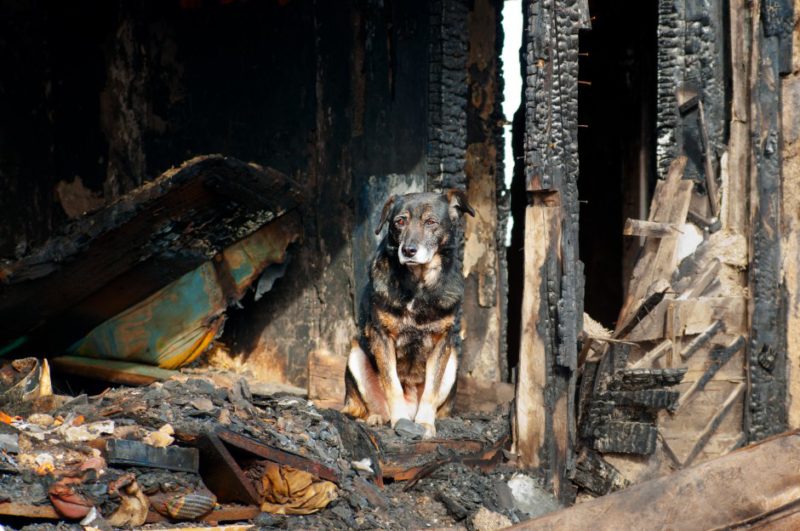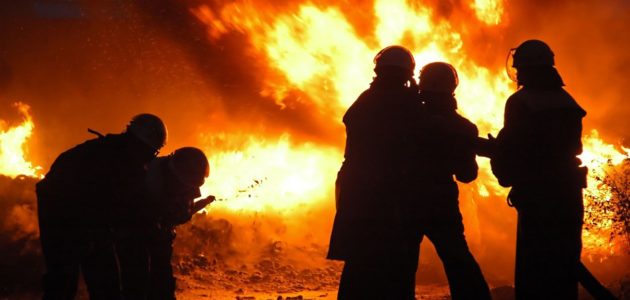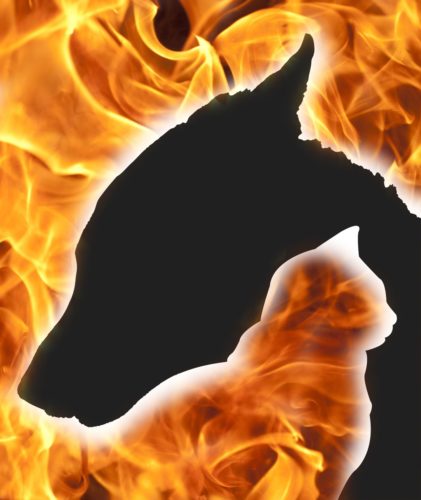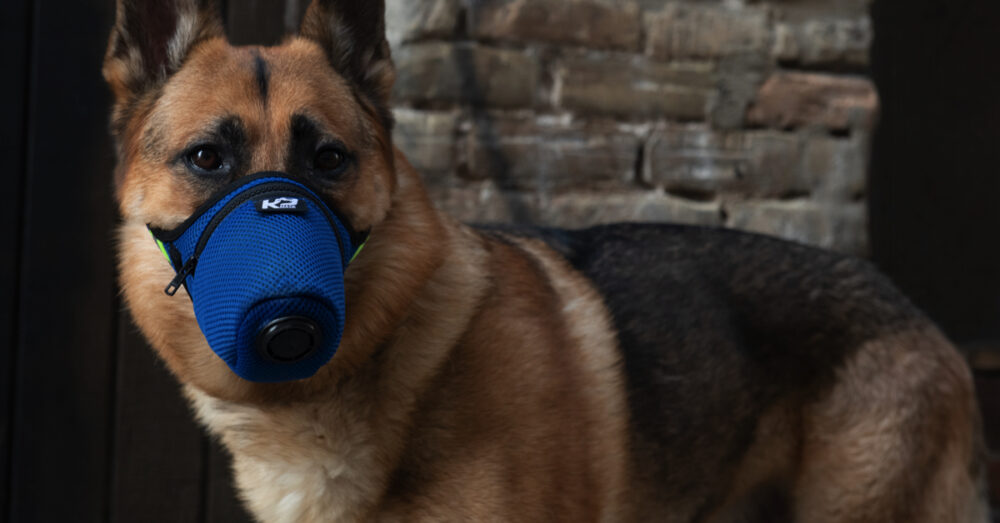
15 Apr How To Respond to Fire Hazards & Pet Smoke Inhalation
A new disaster for pets is on the rise with fire hazards and smoke inhalation issues have sent parts of the country into a tail spin. Too many people have already lost homes, property, and even the lives of human and animal loved ones. Knowing what to do should your cat or dog suffer fire related injury could save their lives.
Fire Smoke Inhalation Tips
Most cases of smoke inhalation from forest fires involve situations where the pet cannot escape. Dogs and especially cats tend to hide when frightened, and may not make an effort to get out of a burning building until too late. But the recent wind-fanned flames of grass fires move quickly, produce a lot of smoke, and can catch outdoor pets unprepared.
 SIGNS OF PET SMOKE INHALATION
SIGNS OF PET SMOKE INHALATION
Pets who breathe smoke gasp or cough, and may faint from lack of oxygen. Their gums can turn pale or blue for lack of breathable air. This is an emergency that requires prompt vet attention.
Soot and ash causes irritation and can clog lungs but it’s the invisible gasses that often kill. Gasses like acrolein, benzene, formaldehyde and carbon monoxide danger, even after the pet seems to recover, and can affect pets hours to days after the initial inhalation. Keeping pets on the first floor, low to ground, helps because smoke rises. Getting them into fresh air immediately also helps enormously. If people need to evacuate, so do the pets.
WHAT TO DO FOR PET SMOKE INHALATION
Dogs and cats with history of respiratory problems, such as flat-faced breeds or pets with asthma, may suffer health problems even with mild exposure to smoke. With mild cases of smoke inhalation, moving the cat or dog into clean air may be all that’s needed.
People with access to oxygen may be able to “rig” an enclosed kennel space with more breathable air for at-risk pets. Don’t hesitate to ask EMTs about oxygen help for your pets as well as yourself. These days, many come equipped for just such a situation.
But all pets require veterinary attention because even if they seem to recover, smoke can kill hours to days after it’s inhaled.
 FIRE HAZARDS & FIRST AID FOR BURNS
FIRE HAZARDS & FIRST AID FOR BURNS
With burns, the fur often hides the damage, so be sure to carefully examine your pet if you suspect he’s been in the vicinity of a fire. Remove his collar, and trim the fur short with blunt scissors around and over the area of the burn.
First-degree burns cause red marks and can be treated with simple first aid. Flush the burn with cool water for 5 to 10 minutes to temporarily anesthetize and clean the injury. Burns continue to “cook” the tissue even once the heat source is gone so prompt attention stops the damage. Use a garden hose for outdoor pets or bring smaller pets into the bathtub or sink and use a spray bottle or handheld showerhead. You can use aloe vera ointments or vitamin E directly on mild burns to help speed healing. These won’t cause problems if the pet licks them off. Mild burns won’t need bandages.
Burns that cover 25 percent of the pet’s body lead to shock (that can kill him!) and applying cool water makes shock worse. Instead, apply a bag of ice to the burn (frozen peas or corn works well), wrap the pet in a towel and get him to the vet immediately. You can estimate percentage of body mass the burn involves by knowing that each limb represents about 10 percent of the pet’s total.
In these windy, dry days, protect your furry family members–and yourselves–from the threat of fire. But should the unthinkable happen, be prepared.




Sorry, the comment form is closed at this time.